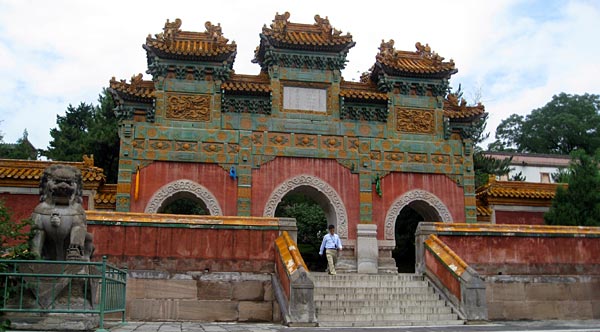By Suzi Tart
As I explored the huge Imperial Summer Villa in Chengde, the stark contrast between the fading past and the ever-changing present surrounded me. In Chengde, centuries-old temples and playgrounds of former emperors clash with busy, modern day lifestyles and growth pangs of development. Everywhere I looked, there were remnants of the old and of the new.

Inside the emperor's summer getaway, an amusement park stands juxtaposed to traditional courts filled with ancient clocks and paintings. Many people wear the traditional clothing, but they also sport a camera to accompany the "costume" -- the only ones who actually wear the former attire these days are the photo shop workers trying to make a few yuan off travelers wanting to capture the experience.
The clash of ages is even more apparent at the temples. Minus one or two elderly regulars, the temples are flooded with tourists who come to spin the prayer wheels for fun.
Inside the rooms, ancient statues of Buddhas stand still while modern dance music jives from the mp3s of the young temple guides. There were few Westerners to be found; yet all along the streets and in many of the restaurants, people continually offered their help and surprised me with their incredible English-speaking skills.
Outside the cultural and historical sites, the developing town of Chengde buzzes with Internet cafes and motorcycles. What is everyday life for the locals seemed like a different world to me. As I tried to make sense of the city, I realized that Chengde's modern life revolves around its past.
Although an emperor no longer visits the villa and although most temple-goers are tourists, the people of Chengde haven't lost their rich heritage. Rather, they're preserving it. In the seat of development, not only are they are keeping pace in their high-tech, fast-paced lifestyles, but they're making sure to save enough room for the lifestyles their ancestors once lived.